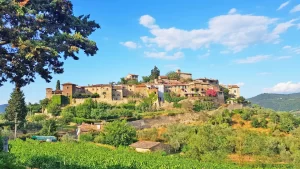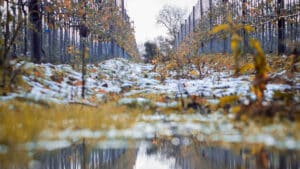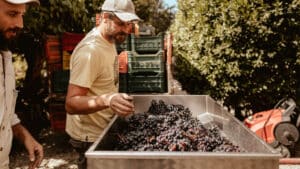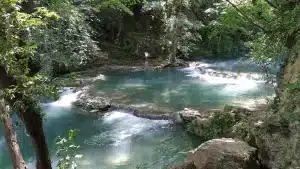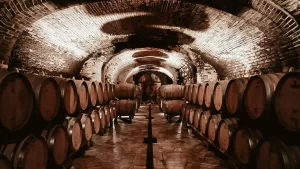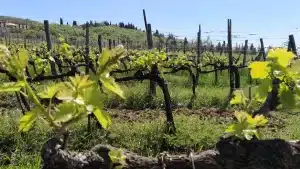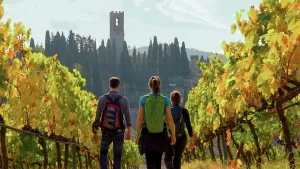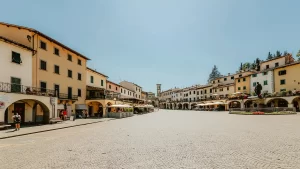Indice dei contenuti
The Chianti area among rivers, woods and valleys
The overall region of Chianti is located in the heart of Tuscany, situated between the cities of Florence and Siena, with some areas extending toward Arezzo. The origin of the name has not yet been ascertained, but the most reliable hypothesis goes back to the Etruscan word “Clante” meaning water.
As a matter of fact, the Chianti area is bathed by many rivers and streams that animate its land configuration with their valleys: Pesa, Greve, Ema, Ombrone, Staggia, Ambra, Arbia and Elsa.
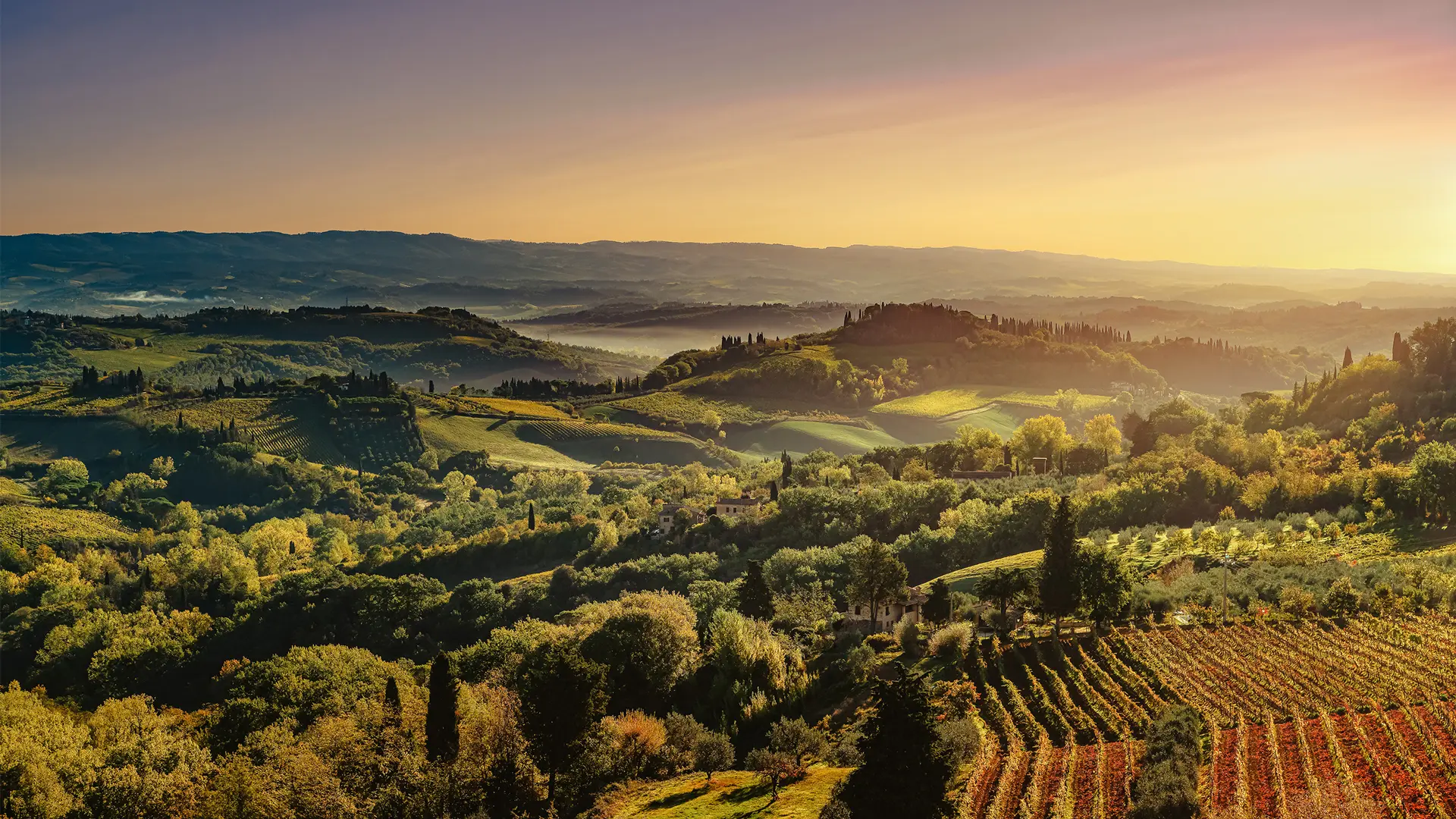
A 2500 year history
The Etruscans arrived in these lands around 500 B.C. and were the first to modify the Chianti landscape. They abandoned sheep farming for agriculture and introduced the cultivation of grapevines, which over the centuries has become one of the most important symbols of the territory. The agricultural development was then enriched by the Romans, who gave a great impetus to the rural economy, starting in particular the olive trees cultivation.
Unfortunately, with the fall of the Roman Empire, the Chianti area experienced centuries of decadence and a very long period of war between the Guelphs of Florence, loyal to the Pope, and the Ghibellines of Siena,loyal to the Emperor: anantagonismthat will drag on until the beginning of 1200 when a truce will assign to Florence most of the disputed territories. Still today, on the Chianti hills, the many castles and fortified villages, at a short distance from each other, are faithful witnesses of this stormy past. Did you know that the legend of the Black Rooster was born from the conflict between Florence and Siena? Read more in this article.
The art of making wine
The Medieval centuries, however, were not just war scenes. Thanks to the Benedictine and Vallombrosian monks in the Abbeys of Coltibuono and Passignano the art of making wine grew and prospered at least until the middle of the 1200s, when the first taverns started to open and the so called “Arte dei Vinattieri” developed more and more understanding that making wine, from a restricted privilege, could also become a source of wealth for many people.
Chianti today
The charm and beauty that the Chianti area has acquired over time is mainly due to its centuries of tormented and compelling history, rivalries between towns, theories of villages, castles and churcheswith their stories and legends, all enclosed in a natural setting surrounded by gentle hills. Today’s Chianti landscape, made of vineyards, fields of olive trees and woods, is a wise result of economic and productive choices. But, beyond the territorial characteristics, Chianti remains today a treasure chest of culture, works of art and wine, known all over the world, and a synonymous of “a way of living” enjoying the pleasures of life.


